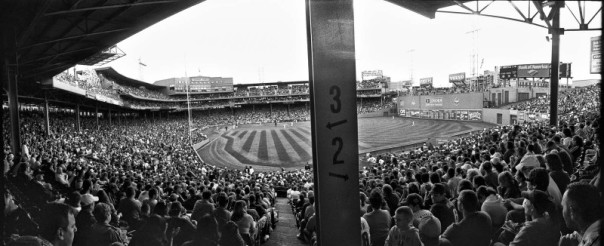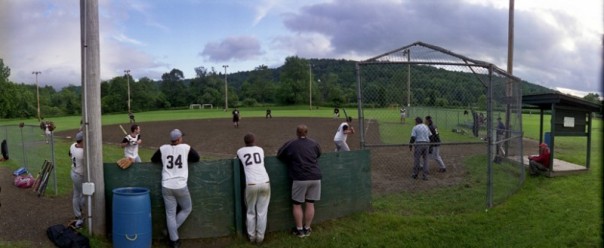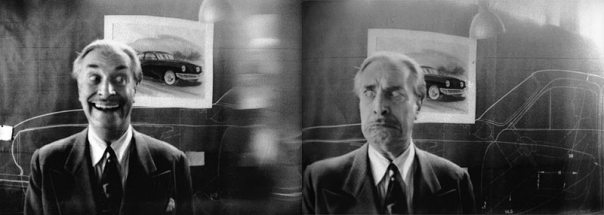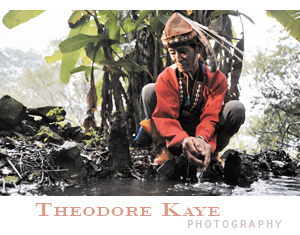Recently, I’ve started working with the Widelux – which allows for ‘decisive moment’ panoramas – a specialized Japanese camera now out-of-production, after the Panon factory burnt down . The camera achieves this through a neat 26mm lens that swings across the curved film plane allowing for a 126 degree field of view (140 diagonally across the negative), roughly approximating what we see in front of us. Unlike the extreme distortion you get in ultra-wide or fisheye lenses, the widelux preserves detail evenly while giving a subtle form of distortion. (Detailed explanation here.)
Photography has always been a way for me to share my experiences, to give a sense of the spaces out there. Panoramas offer a unique aspect ratio to engage viewers. The fact that most 35mm SLRs and DSLR cameras are in 3:2 aspect ratios has intensely affected how we frame, process, print and digest imagery. The exact reason we settled on 3:2 seems to be a point of contention – one photographer attributes this ‘golden rectangle’ sizing to Oscar Barnack, who is credited with engineering the first still-photo camera capitalizing on surplus 35mm cinema-film. As with any new aspect ratio, I’ve found myself re-creating rules of composition and lighting to work with the widelux.
A lot of point-and-shoot cameras use the 4:3 wider ratio, which more closely matches the increasing glut of widescreen monitors and TVs. As the costs involved in creating digital sensors drop, maybe a digital panoramic camera to span across your HDTV (that isn’t insanely expensive) might become a reality.
In researching panoramic photography particularly related to the widelux, material out there has been relatively fragmented and sparse so I’ve written this post to aggregate and showcase some of the most useful and inspiring info and imagery I’ve found. Of course, this is far from final and any additions or corrections are welcome. More after the jump.
Ever since being inspired by Josef Koudelka’s Chaos in college, I’ve been keen to explore panoramic photography. I’ve been toying for a while with 360 degree VR photography which requires preplanning, tripods or for hand held work ultra wide-angle lenses like the Sigma 8mm or the Nikon 10.5mm (image quality is often limited with these due to the extreme distortion). Coming from a photojournalist background, capturing scenes as they are works reasonably in 360VR work (my best example might be the Taipei Gay Pride parade) but I find that with all the post-processing involved and the knowledge that the moments were not truly simultaneous, I’ve often been left wishing for a more ‘defining moment’ panorama. For example, the color widelux panorama of the softball game above – capturing with the softball mid-flight, the various body postures of the players – would not have been possible with conventional photo-stitching techniques.
Some of the most comprehensive documentation of the various Widelux models and repair options available – from Jumboprawn’s Worldwide Widelux HQ.
There’s a lot of exciting Widelux work out there, but surprisingly not as much as one might imagine.
Probably the most famous Widelux user is actor Jeff Bridges of ‘The Big Lebowski’ fame. Documenting the film sets he has worked on over 28 years, he’s got multiple wonderful shots; most inspiring is his ‘Tragedy/Comedy’ portrait series interspersed throughout, in which the slow-panning 1/15th shutter allows for two versions of a person, one comic and one tragic, side by side. Bridges also shares a great user-guide for the Widelux, a must-read that helps avoid some pitfalls inbuilt to the camera.
Recently profiled in the NYT Lens Blog – academic Bruce Jackson shares some incredible widelux panoramas of prison life in 1970s Arkansas that he shot while working on a project about black convicts’ work songs. Some of the photos remind me of Mikhail Subotzky’s recent work on a South African prison.
One of my favorite Widelux users is Jens Olof Lasthein, who recently won a Oskar Barnack award from Leica for his panoramic images of Abkhazia. The Camera Obscura blog features a gallery of his earlier (and to my mind, better) work on the Black Sea region with his descriptions of the shooting process and people he met along the way. Having lived in the post-Soviet ‘stans for a few years myself, I find his intimate exploration of the E.European landscape strangely familiar.
If you know of more great widelux work out there, please share in the comments!








Hi Ted,
do check out Pieter Ten Hoopen’s Widelux pictures of Stockholm as well. Quite interesting, to my mind.
http://www.pietertenhoopen.com/
Fabulous article. Thank you so much. The widelux is the best kept secret.
I found your link through a few links and http://hikingtaiwan.wordpress.com/… that panaromic virtual tour of ba yan hot springs in taiwan looks amazing! Your pictures are fantastic. 🙂
I am going to taiwan next week and am really looking forward to it! Thanks for sharing 🙂
~Love, Estelle Kiora